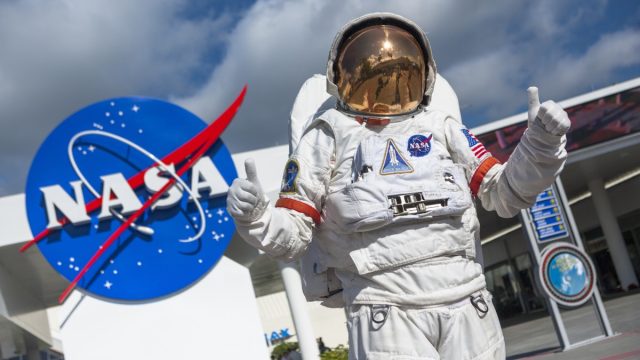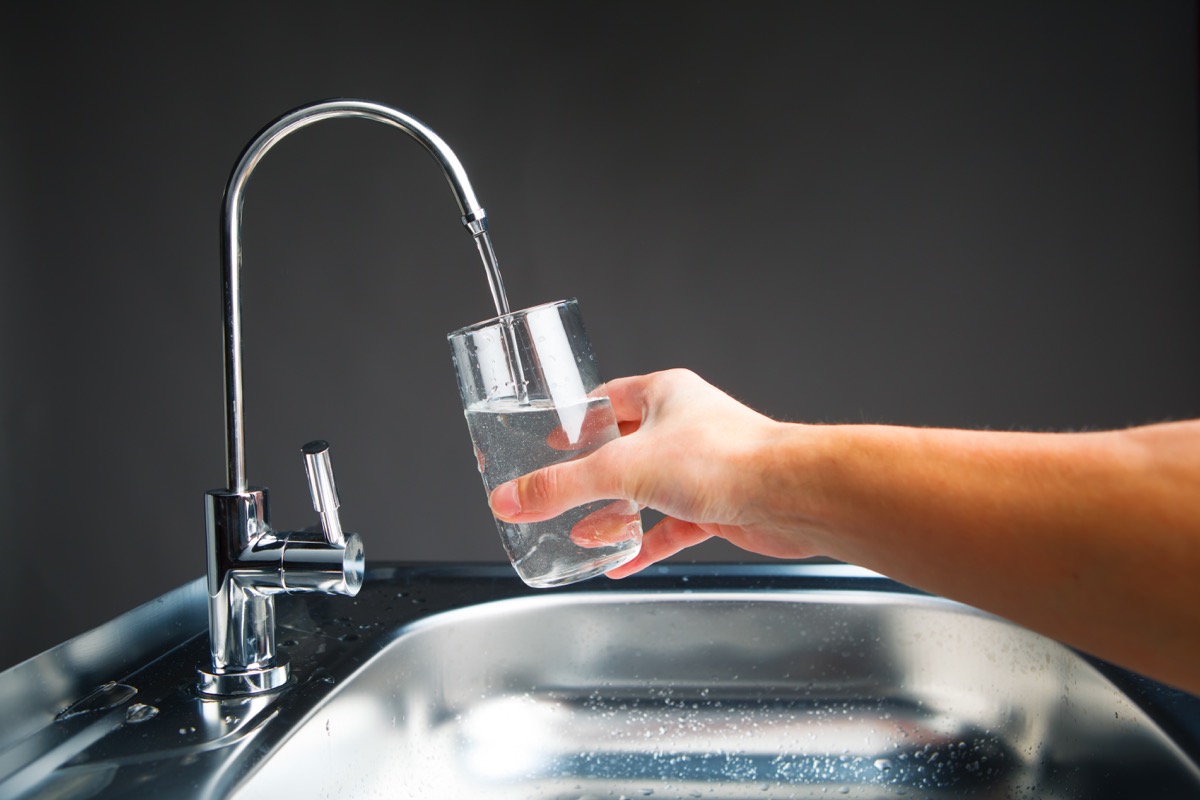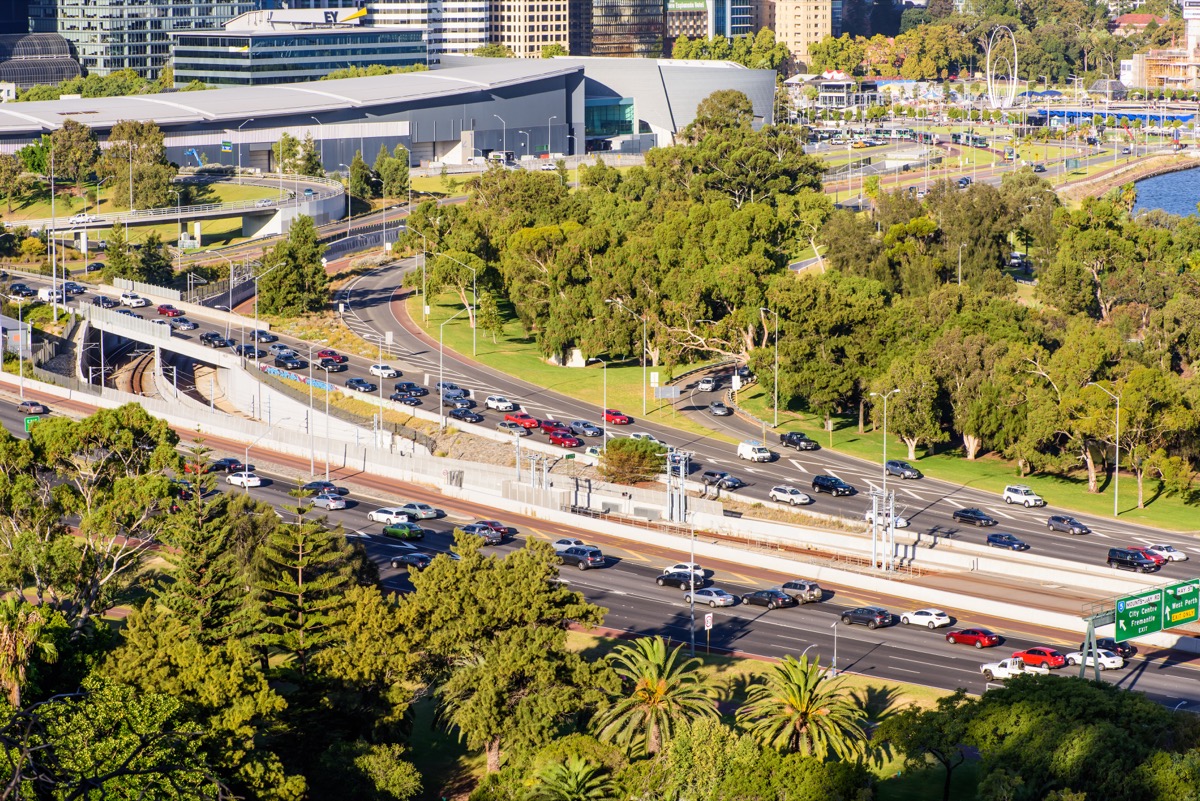23 Everyday Items We Wouldn’t Have Without NASA

Since it was established in 1958, NASA has launched us into space, put us on the moon, and even 60 years later, they’re still busy discovering new planets. But did you know that NASA has actually changed our everyday lives as well with some very useful inventions? If it wasn’t for the organization’s technological advancements and innovative creations, we wouldn’t have many of the things we use every day. Curious to know what exactly we’d be missing if it wasn’t for NASA? Then read on to find out which ordinary things we should be writing NASA “thank you” notes for.
1
Athletic Shoes

Next time you’re running in a good pair of athletic shoes, make sure to thank NASA. In the late ’80s, shoe manufacturer AVIA was on a mission to create an athletic shoe with a longer lifespan. Partnering with Apollo aerospace engineer Al Gross, they released their Compression Chamber midsole in 1990, which uses the same technology that’s in space suits to retain shock absorption, stability, and flexibility properties.
2
Precision GPS

While you can pretty much get anywhere and everywhere these days with the aid of Google Maps, it was only 30 or so years ago that things became so simple, courtesy of NASA. In the ’90s, the space-exploring experts developed software capable of fixing uncorrected GPS data. It was originally sourced by NASA for the U.S. Air Force, but has since been shared with commercial and private pilots, as well as with most major precision GPS providers. Thanks, NASA!
3
Computer Mice

It’s hard to believe, but the first computer mouse was created all the way back in the ’60s, long before the use of commercialized computers. At the time, a Stanford Research Institute innovator by the name of Douglas Engelbart partnered with NASA’s Bob Taylor, who was looking for a simple way to better interact with computer-aided displays, and with a grant from the organization, they created and patented the first computer mouse.
4
Camera Phones

During the ’90s, one NASA laboratory team was tasked with researching ways to improve image sensors so that they could use miniature cameras on spacecrafts without sacrificing image quality. Lead researcher Eric Fossum ended up creating active pixel sensors from complementary metal oxide semiconductor (CMOS) technology, and he licensed his invention after others expressed doubt. It was a good move for Fossum, seeing as more than a billion CMOS image sensors are now manufactured each year and are used in virtually all digital still and video cameras. In fact, without this creation, it’s highly unlikely that we’d even have cell phone cameras.
5
Memory Foam

Sure, NASA is helping people get to the moon, but here on Earth, they’re also helping you get a better night’s sleep. As NASA-funded researchers were searching for ways to protect pilots during flights in the 1960s, they developed memory foam as a cushioning. Today, it’s used to make beds, couches, chairs, shoes, movie theater seats, and even football helmets.
6
Water Filtration Devices

In the ’70s, NASA partnered with Umpque Research Company (URC) to figure out how to purify drinking water on long space journeys. Eventually, they developed a system called the Regenerable Biocide Delivery Unit, which eliminated the need for frequent replacements of the cartridge used to purify the water supply. This technology is now used to purify large municipal water systems in many developing nations, cleansing drinking water for thousands of people every single day.
7
Invisible Braces

Partnering with Ceradyne Inc., NASA was able to use translucent polycrystalline alumnia (TPA), a ceramic notable for being stronger than steel and resistant to breaking, to create invisible dental braces. TPA was originally used by NASA to build heat-seeking missile trackers. So, that innovation keeping your teeth in line is no joke!
8
Scratch-Resistant Lenses

In 1972, the Food and Drug Administration (FDA) put a regulation on sunglasses and prescription lenses that required them to be shatter-resistant, leading to the use of plastic over glass. However, though it didn’t shatter easily, plastic’s downfall was that it was not scratch-resistant.
So, in the 1980s, after obtaining a license from NASA for their scratch-resistant coating technology used on astronaut space helmets and other aerospace equipment, eyewear company Foster-Grant combined their own technology over a decade in the making to produce superior, scratch-resistant plastic lenses. Nowadays, a majority of the lenses sold in the United States use this technology.
9
Safety Grooving

What does a space organization like NASA have to do with highway safety here on planet Earth? Well, they helped implement the use of safety grooving, which increases traction on roads and runways and reduces hydroplaning and skidding.
This safety technology was first used by NASA to keep aircrafts, like returning space shuttles, safe upon landing. Since then, it has been applied to commercial airport runways, highways, stairways, sidewalks, parking lots, and more. After it was implemented publicly in 1985, a report by the California Division of Highways—which conducted before-and-after grooving studies at 14 locations—showed that grooving decreased wet weather-related accidents by 85 percent.
10
Better Tires

NASA not only played a part in road improvement, but also in tire improvement. In the mid-2000s, NASA engineers partnered with Goodyear to develop the Spring Tire, which supports heavy loads and conforms to any terrain, particularly soft sand and rocky ones. The organizations partnered again to produce the Superelastic Tire, which can be used both on missions to the moon, to Mars, and also right here on Earth in lieu of off-road pneumatic tires.
11
Air Purifiers

While natural air circulation protects us from the fumes of ethylene gas released from plants when they grow, that same luxury isn’t available in the sealed environment of a spacecraft. To combat this, NASA developed ethylene scrubber technology to purify the air up in space, and this technology is now used to keep the air clean in kitchens, hospitals, hotels, and even in grocery stores where produce needs fresh air to stay, well, fresh.
12
Firefighter Equipment

When reentering the atmosphere, astronauts face extreme temperatures. To provide suitable insulation and protection, NASA developed a line of heat- and flame-resistant textile fabrics made out of Polybenzimidazole, or PBI, to use in spacesuits and space vehicles. This material was then introduced in the late ’70s for use in fire equipment, because if it’s good enough for folks traveling through space, it’ll work for us here on Earth, too.
13
Household Insulation

When NASA developed Radiant Barrier technology to protect astronauts from high temperatures, they probably never imagined it having everyday applications. However, the private sector has been able to take this same technology and apply it to energy conservation techniques used in homes and offices. One example of this is Eagle Shield, an insulation product that can be installed on top of existing insulation for the sole purpose of reducing heating and cooling bills.
14
Lifeshears

Lifeshear cutters are a hydraulic tool with up to 100,000 pounds of spreading force. This tool, which is crucial in emergency situations, is often used by firefighters for vehicle extrication after a crash. Developed through the joint efforts of NASA and the Hi-Shear Technology Corporation, lifeshear cutters use the same power source that was originally used to separate rocket boosters from space shuttles.
15
Dustbusters

During the era of the Apollo missions, NASA needed suitable technology to extract core samples from the moon for examination. They partnered with The Black & Decker Manufacturing Company to develop a computer program that optimized the design of a drill’s motor, allowing for minimal power expenditure. Using this technology to better develop battery-powered resources, Black & Decker went on to create the popular Dustbuster, a miniature, hand-held vacuum.
16
Freeze-Dried Foods

While conducting research on suitable ways to preserve food for long space explorations, NASA developed freeze drying, a technique in which freshly cooked foods are dehydrated so that they can be stored for long periods without refrigeration. This technique and the technology that allows it is used nowadays to make snacks like freeze-dried fruit.
17
Baby Formula

While researching ways to use microalgae as an oxygen source in space in the 1980s, NASA discovered algae that naturally produced docosahexaenoc acid (DHA), an omega-3 fatty acid integral to the development of infants. According to NASA, this algae can now be found in more than 90 percent of infant formulas sold in the United States.
18
Medical Scanners

NASA’s helped play a pivotal role in the medical field, most notably by helping to detect and treat cancer. The organization originally used digital signal processing during the Apollo moon landings as a way to develop computer-enhanced pictures of the moon. This same technology was then implemented in various medical machines we use today, like spiral CTs and MRI machines.
19
Modern Artificial Limbs

NASA has also assisted the medical field in terms of human prosthetics. When Harshberger Prosthetic, a company that specializes in making artificial limbs, needed a way to improve their prosthetics and replace materials that were heavy, easy to break, and hard to ship, they turned to NASA. Using the same foam insulation found in the external tanks of space shuttles, the company was able to reduce the cost of making artificial limbs, which lowered costs for patients and allowed for prosthetics to be mass-produced and shipped all over America.
20
Super Soakers

Surprisingly, it took an actual rocket scientist to develop the Super Soaker. Lonnie Johnson, who worked for NASA’s Jet Propulsion Laboratory, created the toy water gun by accident when he was working on creating an improved heat pump. The NASA scientist partnered with Larami Corporation, and together they patented the idea and sold the branded Super Soaker in the early ’90s. And for more ’90s toys we can’t forget, check out the 20 Things Every “Cool Kid” Growing Up in the 1990s Owned.
21
Adjustable Smoker Detectors

NASA did not invent the smoke detector. However, they did help create the modern, adjustable version that we use today. As part of their Skylab project, the organization created a smoke detector with adjustable sensitivity in the ’90s. Honeywell commercialized the technology, which ensures that smoke detectors don’t go off in non-emergency situations.
22
Modern Airplanes

If you ever look out of the window while flying and notice the upturned wing, be sure to give NASA a quick shoutout. The upturned tips of wings, known as winglets, were developed by NASA researchers in the ’70s as a way to conserve energy in aviation. Nowadays, these winglets can be seen on almost all modern aircrafts, saving billions in jet fuel.
23
Food Safety Regulations

NASA is also to thank for many of the food safety regulations we have today. In order to ensure the safety of the prepackaged foods used during space travel, the organization partnered with the Pillsbury Company to create more quality control in the food industry. Their method became known as the Hazard Analysis Critical Control Point System, and it’s used today as an industry standard for keeping food safe from potential chemical, physical, and biological dangers. And for more innovative creations, check 30 Inventions That Are Way Older Than You Probably Thought.
To discover more amazing secrets about living your best life, click here to follow us on Instagram!